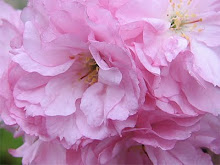It grows fast and reaches two to three feet tall in just a few weeks of warm spring weather. Because it's a perennial, it comes back every year after dying back in the winter. We planted it a couple of years ago and since then I've learned that if I cut it just before it starts to flower, then it will continue to grow and give me a second harvest in the same season.
Lemon balm is from the mint family and it looks a lot like spearmint and catnip, both of which we are also growing nearby. Lots of little plants are popping up this spring all over the various flower beds and the only way I can tell if it's really lemon balm is by crushing a leaf between my fingers and smelling the strong lemony oils from it. Oh yes, that's definitely lemon balm — the scent is delightful!
So far, I've mostly enjoyed our lemon balm as an ornamental plant in the gardens. And so, today I decided to look up other possible uses as mentioned in my collection of books about herbs.
Drying Lemon Balm for Later Use
I bundled the stems, each about two to three feet long, into a giant bouquet and tied it up with green garden twine. Then I hung it up from a rafter in the attic, where it's dark, warm, and airy, to dry for two or three days. I'm planning on using the dried leaves for tea mainly, but I'll also experiment with adding it to food and sauces.
According to Growing And Using The Healing Herbs, by Gaea and Shandor Weiss, lemon balm is a rather fragile herb and it is best to try to dry the leaves within a two-day period and to monitor their progress carefully during this time. This book has a lot of useful information about lemon balm as well as directions for making healing infusions and teas. (See pages 173 and 306.)
"The fresh plant is more effective than the dried."
—The Herb Book, by John Lust
According to the book Herbs: Gardens, Decorations, and Recipes, by Emelie Tolley and Chris Mead (page 136), Elizabethan nosegays filled with lemon balm were given as messages to express sympathy.
It's true, the scent of the plant is heavenly, and becomes even more intense after I cut the stems or crush the leaves. It smells like a mixture of lemons and mint, and it really does lift your spirits! I think I'll cut a few more stems and put them in a flower vase today.
Related Blog Articles:























































